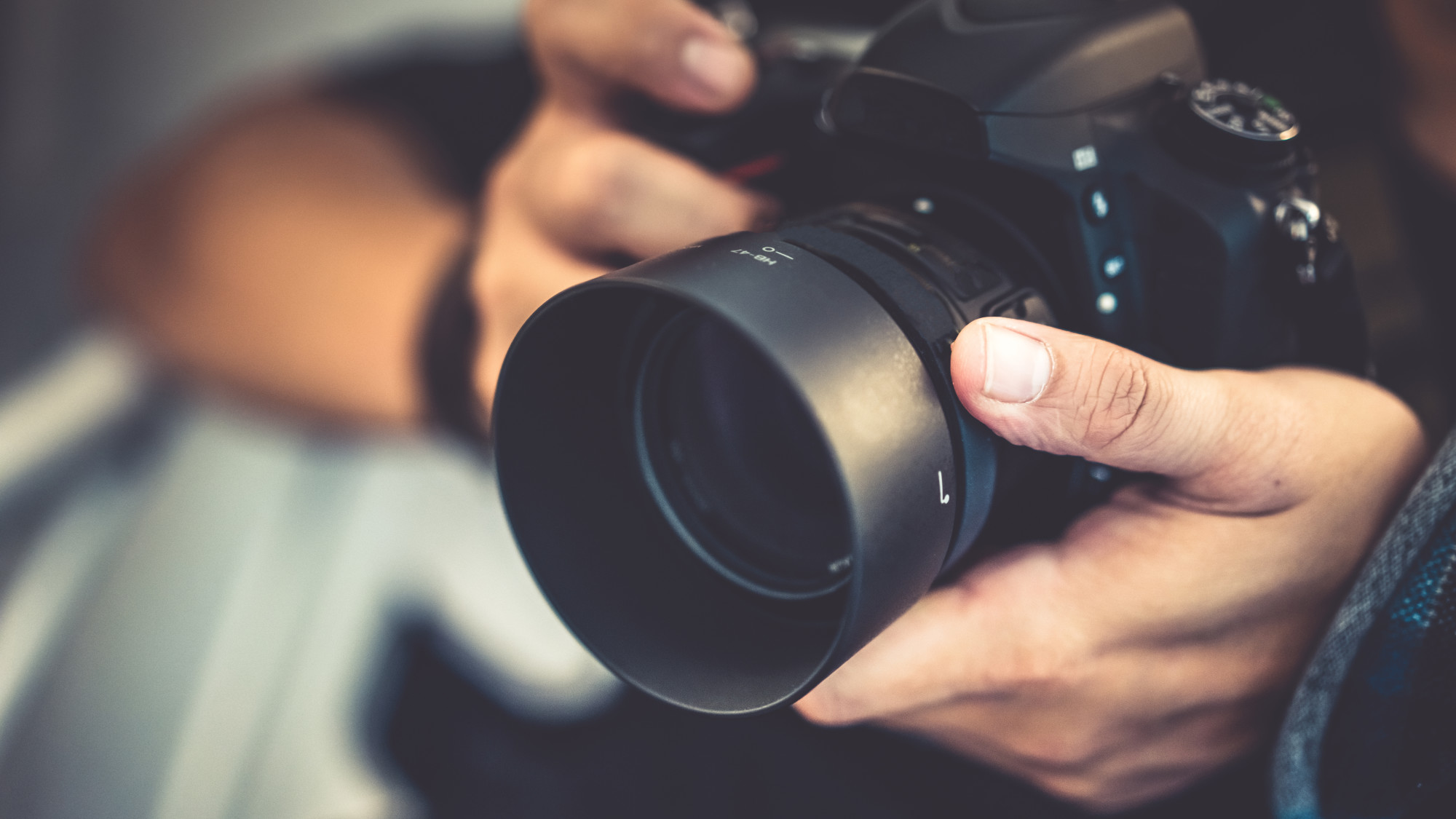5 Reasons Hotels Can’t Checkout on SEO Marketing Strategy
Posted on October 05, 2020 by Logo Design Tips and Tricks

Did you know that 60% of all travel searches start on mobile? People are searching online for where to stay, where to eat, and what to do. So, if you want to increase your nightly capacity at your hotel, you need to be online.
You can attract your ideal visitors to your hotel by attracting them to your website first. If you’re wondering how your website marketing strategy can help your hotel grow, then you’re in the right place.
Don’t spend any more time wondering how content marketing can increase visitors to your website. Keep reading to learn five ways SEO can help your hotel increase your capacity every night.
1. Target Your Ideal Visitors With Targeted Keywords
Go further than simply targeting “hotels in your city” and target your ideal visitors. You can do this by writing articles about the museums in your city or the top dog parks in your city. These articles will attract people who want to visit your city but aren’t sure if they can find a pet-friendly location.
2. Attract More Visitors With List Posts
Some visitors aren’t sure where they want to go, so list posts can be a great way to cast a wider net for future clientele. Use your favorite keyword finder software to target searched for terms such as “top cities for families.” Include your city and hotel in your article and you’ve naturally incorporated your search and your sales pitch without seeming spammy.
3. Guest Post on the Sites Your Visitors Are Also Visiting
Your content marketing doesn’t have to stop on your own webpage. Write great content for several travel blogs and you will reach a much larger audience. Link back to your website and you’ll naturally drive visitors back to book with you.
4. Optimize your website for maximum ROI
Nobody likes a slow website. In fact, most people will leave your site if it takes longer than three seconds to load. So don’t neglect the technical side of your site, be sure to optimize it so it is running smoothly and quickly.
5. Get Help When You Need It for Your Marketing Strategy
You don’t have the time to spend hours on your website and blog. So, outsource your content marketing to an expert who can help you grow your business through organic search. Your hotel SEO marketing is too important to leave to chance. Bring on the experts and watch your business skyrocket next vacation season.
Increase Visitors To Your Hotel by Driving Visitors To Your Website
You want to increase your hotel capacity night-over-night. That begins by driving visitors to your website and gaining their trust with helpful information.
People are visiting your city every day. But are they staying with you? Get visible and share your love for your city through your blog and optimized marketing strategy.
That will, in turn, drive traffic to your hotel and raise your bottom line. Don’t stand empty any longer. Use the valuable real estate on your website to get visitors and grow your guest list naturally and organically with content marketing.
For more great information on this and other topics check out the rest of our blog.
What Is a Patent and Do I Really Need One?
Posted on October 05, 2020 by Logo Design Tips and Tricks

So you’ve invented something, that’s amazing! Now you may be thinking about how to protect your invention and make sure you get the credit for your discovery.
At this point, you may have come across the word patent and be asking yourself what is a patent? We’ve gathered all the things you need to know about patents in one convenient place do you don’t have to go searching.
If you want to know what a patent is, if you need one, and how you go about getting one keep reading to find out!
What Is a Patent?
A patent is a legal license granting the right and title to an individual or company to be the only one that can make, sell, or us an invention. The patent will exclude anyone else from recreating the same invention to profit off of.
Patents are similar to copyrights and are granted legally for a certain period of time. It will need to be reapplied and renewed once the period ends so that another individual or company doesn’t buy out the patent.
What Are Patents Useful for?
What is a patent useful for? Protecting your intellectual property and a means to have a legal case against intellectual property theft.
Say for example you create a new machine or a new way of doing something that will revolutionize the market you will want to protect this idea from it getting stolen. You’d do this to protect that idea from getting taken from you and someone else profiting off of your idea.
In the event that someone does steal your idea, a patent allows you to make a legal claim against the individual or company that stole it. Since you hold the patent rights, you can take the idea thief to court and not only get any money they made off your idea but also have them pay you a sum for the theft.
How Do I Get a Patent?
We’ve covered what is a patent, now we’ll look into how to get a patent.
The first thing you’ll want to do is collect all your paperwork for your invention including and notes and research that prove that the idea was fully and one hundred percent yours. The patent office will need undeniable proof that the invention that you’re bringing to them is not a replica or stolen from someone else.
The second thing to do is check to see if your idea qualifies for patent protection. There are quite a few things required in over to qualify for a patent. You will need to make sure your patent is unique and the first of it’s kind.
It will also need to be something that works and has a useful function. You will also need to make sure that it meets the criteria of inventiveness, meaning that it will have to be something that’s completely new or an improvement to something that’s already existing.
Next, you’ll research the marketability of your idea. There is no point in getting a patent on something that isn’t going to sell or be in demand. This is especially true if you have a specific business in mind that you’d like to start with your idea or a business you’d like to partner with.
Because a patent is a legal document filing next thing you’ll need to do is get in touch with a patent law firm and hire an attorney.
A patent attorney will walk you through the necessary legal paperwork and documents necessary to file for your patent. They will let you know whether or not your patent will qualify for protection and make sure that you have all your paperwork in order for filing.
Once your patent is filed and signed by the attorney, you will wait until you hear back from the patent office to confirm your patent approval or deny your request. The process can take anywhere from a few weeks to a few months. Your lawyer will be able to tell you the timeline of what to expect.
What Else Should I Know About Patents?
Not everyone will qualify for a patent so it’s important not to get discouraged if you are denied your patent request. Talking to a lawyer before going through all the paperwork filing will make the process less disappointing and easier as they will be able to tell you whether or not you will get approved.
Every step of the way you’ll want to make sure you document everything along your invention creation journey as you’ll be required to submit all your proof, and sometimes the patent office can be ruthless.
Keep a detailed notebook of your scribbles, testing, and ideas so that you can provide it as proof. Even scraps of paper that you’ve jotted down a formula or a couple of lines regarding the invention can and will be beneficial in your patent application.
Once you get a patent keep an eye on the expiry date of it, as you’ll need to make sure you’re on top of renewals and not miss the deadlines of your renewals. This will also prevent someone else from coming along and using your invention freely because the patent is no longer valid.
What Is a Patent? Now You Know!
Now armed with a list compiled with everything you need to know about patents, you’re well on your way to know whether or not you need a patent if you’ll qualify for one, and what you need to have one.
No need to wonder about what is a patent any longer.
Remember, keep all your notes regarding your invention even if you think they may be trivial and not a big deal as the patent office will want an entire collection of your creation process.
Like what you’ve read? Check out the rest of our site for more informative content!
Digital Photography for Beginners: Essential Tips, Tools, and Tricks
Posted on October 03, 2020 by Logo Design Tips and Tricks

There are around 119,000 professional photographers in the U.S and whether it’s capturing the happy couple on their wedding day to breathtaking landscapes, photography is like no other art form.
Like everything, great photography arises from plenty of practice. Perhaps you’re eager to experiment with digital photography but you’re not sure where to begin. Sound familiar?
If so, you’ve come to the right place. Here’s everything to know about digital photography for beginners.
Learn How to Hold Your Camera
When covering digital photography basics, it’s important to learn how to hold a camera. Use both hands and if you’re using the viewfinder, hold the machine close to your body so you have extra stability.
Make sure you don’t move while shooting otherwise the light will blur the photo. You can even hold your breath when you snap a photo to prevent the camera shake.
Understand the Exposure Triangle
No list of digital photography tips is complete without mentioning the exposure triangle. These are the three most important elements of exposure: ISO, aperture, and shutter speed. As you familiarize yourself with the camera, you must balance these three so you get sharp photos.
ISO controls the camera’s light sensitivity so when the ISO is low, the camera is less sensitive to light. And vice versa. Your ISO should be between 100 to 200 when you’re shooting in the day and 400 to 800 at night.
The aperture is the opening of the lens and it controls how much light seeps into the camera’s sensor along with the depth of field, the area surrounding the focal point of the image. When the aperture is wider, more light is let through but it has a narrow depth of field, fantastic if you want to isolate your subject. But if you want to focus on an entire group of people, use a narrow aperture.
And the shutter speed is the amount of time the shutter stays open while snapping a photo. So when you want to freeze a rapid-moving object, choose a shorter shutter speed as a long shutter will blur moving objects. Experiment and keep changing your ISO, aperture, and shutter speed so you can see the differences in images and learn how each individual element works.
Be Careful With Flash
An important factor in digital photography is flash. Your camera’s built-in flash at night or in low light causes red-eye or harsh shadows which isn’t desirable.
But sometimes you’re in a low-light setting and you have no choice to use flash. To accommodate this, go to the flash settings and reduce the brightness as much as possible. You can also try diffusing the flash’s light by placing opaque tape over it for a softer look.
Experiment With Perspective
All beginner digital photography students must play around with perspective so you don’t get standard, eye-level photos.
You can either change your elevation by going closer to the ground or switching up your angle like facing upwards. And try getting closer or farther away from the subject to see which looks best.
Play around with a combination of all three and you’ll notice how different your photos feel.
Understand the Rule of Thirds
One of the most famous photography tips is the rule of thirds.
This is where you place your subject a third of the way in as it’s stronger than sitting in the middle. Use your camera’s gridlines to help you. Photography is all about creativity so you don’t always have to abide by the rule of thirds but it’s important to understand it at the beginning.
Pay Attention to the Background
Keep the background clutter-free so it doesn’t pull the viewer’s attention away from your subject. Neutral colors and simple patterns work best because they complement the point of interest instead of overshadowing it.
Don’t worry if your background is busy, there are ways to fix it. For instance, change your angle or use a wider aperture and get closer to your subject.
Know About White Balance
White balance is where you tweak the light colors so they appear more natural. You can either set it to automatic on your camera, which is advised, or adjust it depending on your desired tone.
If you want to modify white balance as you shoot, change to Raw setting so you can alter the white balance in the editing stage instead.
Invest in a Great Photography Editing Software
Whether it’s learning how to get lightroom presets on mobile app or getting a photography editing software on your computer, editing photos is a critical stage in digital photography.
You don’t have to go overboard with editing, you may only tweak the brightness or contrast, but it lets you make amendments if necessary. It’s easy to make a mistake when editing so play around with the sliders and effects and see if it adds or takes value away from the photo.
Look After Your Camera Properly
Although it’s not a technical tip, it’s important to care for your camera. Get a special cleaning kit for your LCD screen and camera lens to wipe off any smudges. Always keep your camera in a special case and if you’re shooting in winter, wrap your camera in a plastic bag with silica desiccant packets to prevent moisture build-up.
Those Are Our Digital Photography for Beginners Tips
Now you know digital photography for beginners tips to get started.
Get comfortable with holding your camera and familiarize yourself with the exposure triangle so you learn about the individual elements. Apply the rule of thirds to your photos and play around with perspective to get great photos.
And don’t forget, post-processing is just as important as the shooting. Good luck!
Did you find this article helpful? If so, check out our posts covering everything from Advertising to Beauty.
7 Essential SQL Skills You Need to Master
Posted on October 02, 2020 by Logo Design Tips and Tricks

Did you know that over 132,000 database administrators are in the United States?
If you too aspire to become one in the future, you must know about data platforms and other related information. But without experience, you won’t have an idea of what skills to develop. At worst, you end up not getting your preferred career because of it.
Don’t feel discouraged yet.
With this guide, you’ll learn about the essential SQL skills you must learn. That way, you become an effective database administrator. Read on and find out more:
1. Database Fundamentals
To effectively know what SQL is, you must become an expert on the concept of databases. Know its purpose and how it helps companies organize and data more practically. That way, you’ll have a better appreciation of the database’s role in making companies function better.
This knowledge sets the foundation to help understand SQL’s functionality. It’s especially when you’re using it to benefit any of the millions of small businesses located in the country.
2. Purpose of Tables and Indexes
These concepts are the primary building blocks of SQL. A good comparison to a database is a library, with tables as books. Indexes, on the other hand, function like the old-fashioned file-card cabinets to aid you in finding the books you’re looking for.
It’s a fundamental skill to understand what tables and indexes are, as well as their functions. Knowing their actual operation is a more advanced skill. Regardless, having this skill helps in manipulating data within your database.
3. Basic SQL Syntax and Conditional Filters
Understanding any programming language requires you to learn its syntax. When applied to SQL, it means you must know how to make a query. This ensures you find the information you’re looking for.
For example, learning the most basic SELECT and FROM commands is a must. It’s because these keywords are part of a query that searches for data from tables. It’s a necessity because of the precise nature of SQL.
When using SQL for database management, the smallest of errors can lead to big problems later. That’s why you must get the syntaxes right. It means avoiding keyword errors and misplaced quotation marks to name a few.
Also, you need not pull all records from a column when querying for information. In most cases, your queries will get specific data. Understanding the query structure aids to write more complex commands to extract your desired information.
Examples include the WHERE clause along with OR and AND for table filtering. To organize the data you pulled from the table, use GROUP BY and ORDER BY. After learning this, you’ll know how to write almost all basic queries.
4. Joins and Subqueries
The data you’ll work with aren’t necessarily within the same table. In most cases, it won’t be the case, that’s why mastering joins is a necessary skill. This allows you to merge data from various tables, making it easier to analyze various datasets.
Four types of joins exist in SQL: inner, left, right, and full. Mastering this requires knowing what type to use, as well as the code necessary to execute it.
Subqueries are queries found within another statement, functioning similarly as joins. Use these to link data across various tables. When done right, they’re more efficient compared to joins because it simplifies the data extraction process.
5. Understand How Indexes Function
Database indexes exist for faster queries. Indexes instill order onto data tables, making it easier for you to get your desired data. Knowing the purpose and mechanics behind index creation gives you more ideas on how to use them effectively.
To make the most out of this feature, learn the subtle differences between clustered and non-clustered indexes. You must also know how indexing adds data structure. To top it off, learn the guidelines for making efficient indexes.
6. Learn PHP and How to Work With Popular Database Systems
SQL is a programming language without a database system. It means you must work with systems like MySQL or PostgreSQL to store data for later use. The good news is both are open-source and available for free.
While you’re mastering these, pick up PHP along the way too. It might be an odious ordeal to learn another programming language, but it makes things easier. Gaining a degree of PHP mastery allows you to interact with lots of popular SQL database programs such as MySQL.
If you use these two concepts in tandem, you can build almost any type of website. This is an important skill to learn when you want to become more valuable to the company you’ll work for. Besides, learning something new is always great for enriching your career.
Not sure about using COALESCE in PostgreSQL? Check this guide here to learn more.
7. Execution Plans
This serves as a visual representation of your database engine’s query execution. With this, you have a sneak peek under the hood. This means you get an idea of how the information gets processed by your database management system.
With execution plans, you’ll learn more about a query’s efficiency. It’s one of the primary tools when you troubleshoot an underperforming or slow query. Understanding this concept enables you to finetune your queries without compromising its performance.
Honorable Mentions
These are some advanced concepts you must learn when you master the basics. It’s especially important if you’re planning to run an SQL server.
Backup Databases
This is critical since it’s a contingency in case your current database gets corrupted or damaged in any way. Thankfully, lots of backup types exist. It’s only a matter of knowing which to use.
OLAP
Online Analytical Processes is a class of database applications allowing faster data analysis. This includes innovative methods going beyond the simple two-dimensional spreadsheet. It takes lots of skill to implement, but it’s worth the benefit of gaining insight into various businesses.
Learn SQL Skills Today!
These are the necessary SQL skills you must learn to become a great database administrator. Use these to guide your learning experience.
Of course, mastering SQL and other languages and tools doesn’t end with these 7 skills. To learn even more coding tips and tricks, we encourage you to continue reading our in-depth tech guides right here!








